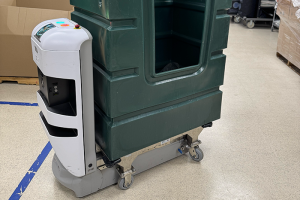Perceptions of cleanliness could cost hospitals
Patients who perceive hospital cleanliness in a negative light often do more than give low scores on HCAHPS surveys. Many assume that they are at greater risk of acquiring a health care-associated infection (HAI) during their stay and will not recommend the hospital to others. Moreover, new research suggests that their suspicions are often correct.
These are a few key findings in new research from Press Ganey and Compass One Healthcare. The firms also say that results of an analysis of HCAHPS patient experience of care metrics and the incidence of specific HAIs reported to the Centers for Medicare & Medicaid Services for the year ending June 30, 2014, show a relationship between patients’ perceptions of cleanliness and HAIs.
“ … The data show a clear correlation between patients’ perceptions of cleanliness as measured by the HCAHPs question ‘How often were your room and bathroom kept clean?’ and the incidence of methicillin-resistant Staphylococcus aureus and Clostridium difficile,” the report states. “Hospitals that scored in the highest quintile for cleanliness had, on average, the lowest number of reported infections.”
As for what environmental services (ES) teams can do to improve patient perceptions about cleanliness, the report recommends:
- ES staff should understand, communicate and take pride in the important role perceptions play in patient safety and clinical quality improvement efforts.
- Consistently assess and improve cleaning methods and procedures to ensure a pathogen-free environment and prevent the transmission of bacteria, viruses and other infection sources.
- Continually audit practices that measure the cleanliness of high-touch surfaces.
- Promote staff accountability for cleanliness and encourage self-audit procedures.
The report also notes that because ES technicians often are dispersed geographically throughout a facility, these workers can feel isolated from their departmental colleagues. Hospital leadership and ES managers can help teams to overcome this challenge through best practices such as:
- Making sure ES technicians are recognized as important team members of the department or unit where they primarily clean. This can be achieved by promoting positive, supportive interactions with nurses and other clinical professionals with whom ES staff interact daily.
- Involving the ES staff in regular departmental meetings, including huddles at the start of every shift, training and development sessions, and monthly staff meetings.
- Encouraging frequent rounding and observation by ES managers; rounding with nursing and other services managers at least monthly demonstrates shared responsibility. // By Bob Kehoe



